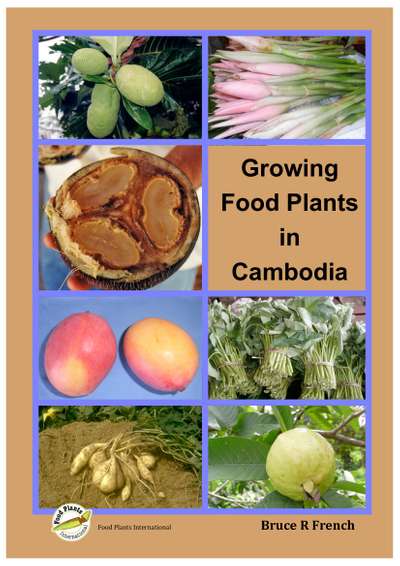Some 3 billion people in the world live outside the cash economy in the world’s poorest nations. Food security and regular supply are their daily concerns. Chronic malnutrition is a leading cause of death and disease for them. Young children are amongst the most affected. One child every 5-10 seconds dies from undernutrition. Vitamin A deficiency causes night blindness for someone every minute. Most people in tropical and subtropical countries are iron deficient.
It does not have to be this way. God has already provided the right plants growing in their right places to sustain people in every place on his earth.
Our goal is to provide information that enables people to choose the right plant for their environment, to give them stable food production and a greater choice of plants to enrich their diets and improve their nutritional wellbeing.
16 Issues in this Publication (Showing issues 2000 - 700) Previous
Good Gardening in the Solomon Islands
Practical ways of growing local food plants, and doing it well.
This book is designed as a simple introduction to good gardening in the Soloman Islands. It is hoped people will take greater pride and interest in these plants and become confident and informed about how to grow and use them. Many of the local food plants that occur in every country are very good quality food. Unfortunately, people often reject traditional food plants and grow more of the introduced vegetables. The principle behind Food Plant Solutions is to encourage the use of local plants.
Feedback on any publication is invited and much appreciated – info@foodplantsolutions.org
Growing Food Plants in Cambodia - 01 មករា 2012
Growing food is one of the most important jobs in Cambodia. It may not be the easiest job and it may not be the most enjoyable, but growing food to feed a family well is without doubt one of the most important jobs anyone can do.
In the world, a child goes blind every minute because they are not eating enough dark green leaves to provide them with Vitamin A. There are thousands of tropical leaves that can be eaten, so the answer is simple.
Leafy Greens of Vanuatu - 12 មករា 2000
This book is designed as a simple introduction to the more common leafy greens Vanuatu. It is hoped people will take greater pride and interest in these plants and become confident and informed about how to grow and use them. Many of the local food plants that occur in every country are very good quality food. Unfortunately, people often reject traditional food plants and grow more of the introduced vegetables. The principle behind Food Plant Solutions is to encourage the use of local plants.
If you download a publication, please contact Food Plant Solutions at – info@foodplantsolutions.org
Feedback on any publication is invited and much appreciated – info@foodplantsolutions.org
Miombo Woodlands Fruit Trees - 20 មករា 2013
These trees are adapted to poor soils, so grow less-well with fertilisers and irrigation.
Tropical Trees for Fruit, Nuts, and Seeds
A brief introduction to some of the group Genera p-z.
There are lots of tropical fruit and nut trees that have not been given the attention they deserve.
The aim of this publication is to help people become aware of this diverse and useful group of plants.
Turning Over A New Leaf: Finding Value in our Local Food Plants
Zimbabwe boasts over 2000 food plants. A great many of these plants have been eaten and enjoyed throughout the millennia. Sadly, however, the current generation consumes only a narrow range of the plants available.
This resource invites students and teachers to investigate and value the indigenous food plants of Zimbabwe. Moreover, it encourages students and teachers to actively experiment, experience and enjoy the rich diversity of nutritious plants that grow here. In doing so, we are convinced that students will find the benefits of improved understanding, skills, nutrition and health. This resource has been designed to support the curriculum especially in the areas of agriculture, food and nutrition. It may be incorporated into a regular classroom program or may be used as an extra-curricular pursuit.





